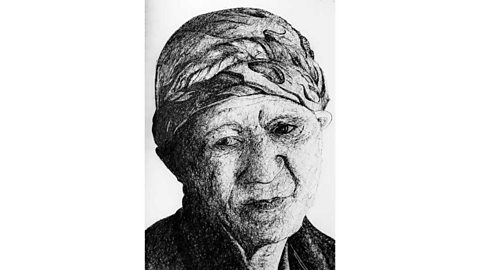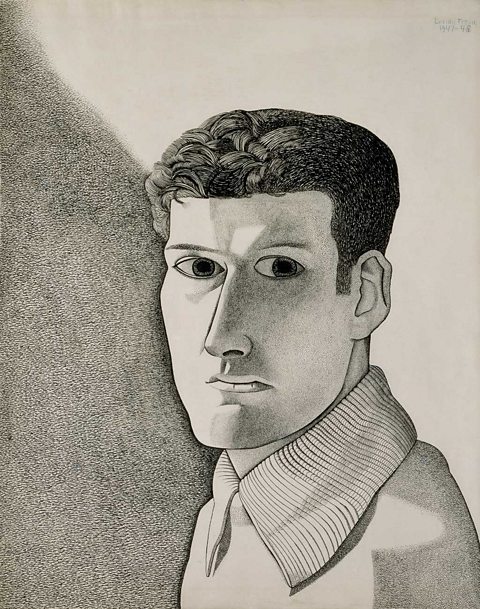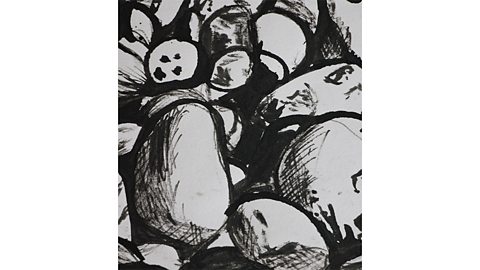Drawing and sketching in pen
Ballpoint pen drawing
Ballpoint pens are good for drawing fine lines and details. They can be used to make marks ranging from fine and faint to bold and solid.
Ballpoint pens can be expressive and are useful for practising mark making such as cross-hatchingA drawing technique where shade or tone are created using crossing lines. or other textures.

Drawing in felt tip
Felt tips can be used to create bold, brightly coloured drawings, with a range of mark making techniques such as cross-hatching and stipplingDots used instead of lines to build up tone. The size, number and distance between the dots will change the tones created.. Felt tips usually have a broad tip which is useful for covering large areas quickly.
Light-coloured felt tips can easily pick up darker colours from a drawing surface. This can be avoided by working from light to dark.
Drawing in fineliner
Fineliners can be used to create dark, thin lines and can produce stark black and white images. Fineliners and felt tips are ideal for cartoon-style artwork.
Tone and colour can be built up usinghatchingA drawing technique where shade or tone are created using closely-spaced lines, cross-hatching or by dotting the surface with the end of the pen. Using a range of thick and thin lines can make artwork look more interesting.
Some fineliners or felt tips can be brushed over with small amounts of water. This pen and wash technique makes them act more like watercolour and can be used to make thin, translucentAllows light to pass through but is not completely clear. layers of colour.
Drawing with ink
Drawing ink can be used with a fountain pen nib or stick. This technique can make precise, detailed work. Using a brush will give a softer finish.

Click through the slideshow for examples of different pen techniques:

Image caption, A student's drawing of pebbles using black ink
Image caption, A student's artwork of a bird’s head drawn with black ink onto a stained background
Image caption, A student's experimentation with fineliners
Image caption, A student's portrait with details drawn in fineliner
Image caption, A student's landscape made using the pen and wash technique
Image caption, A flower drawn with felt tip pens
1 of 6